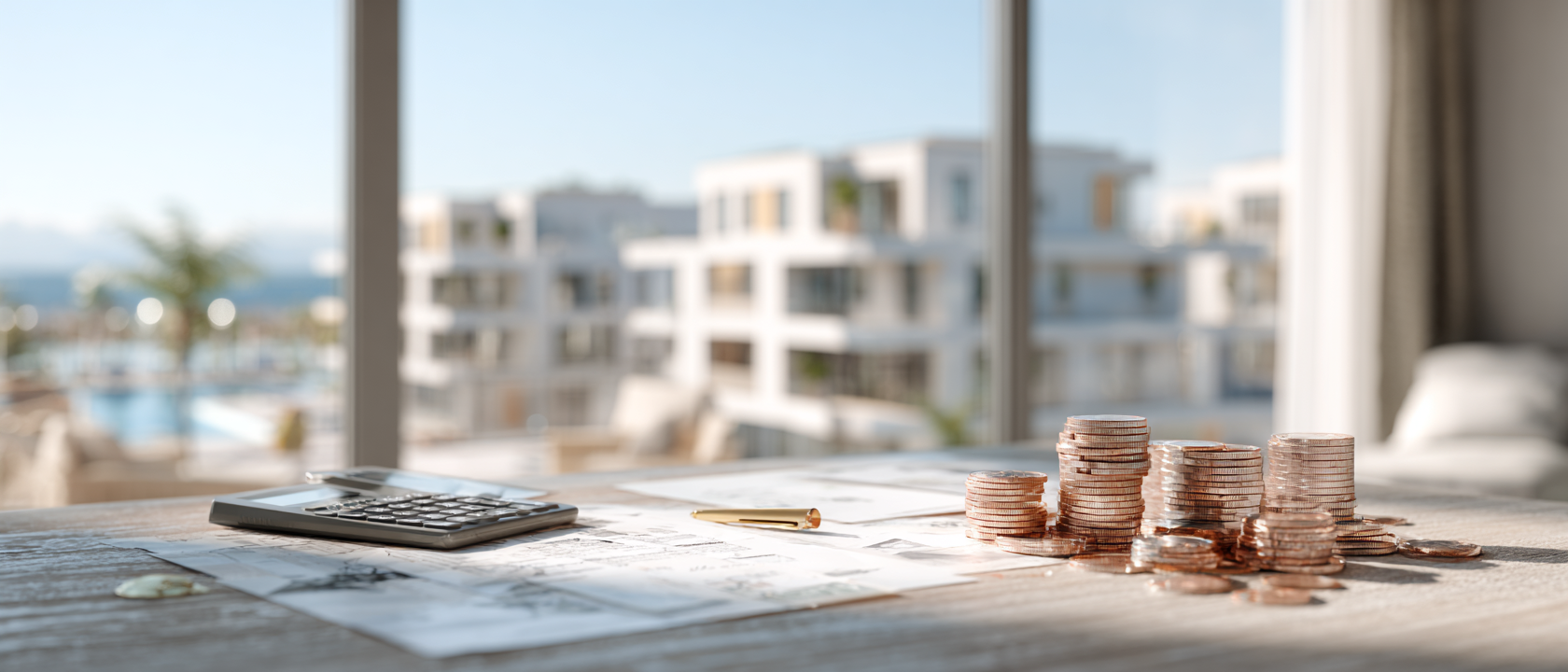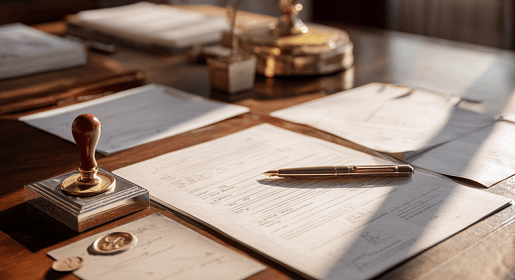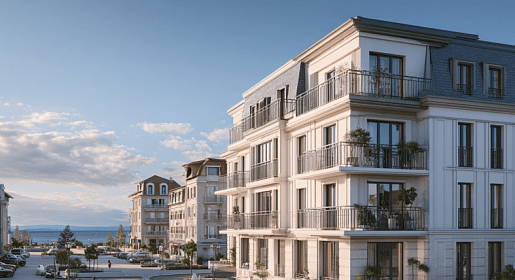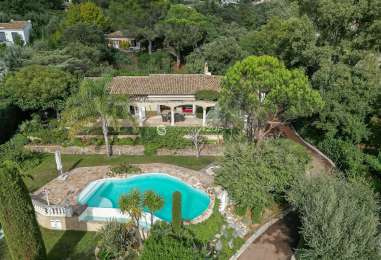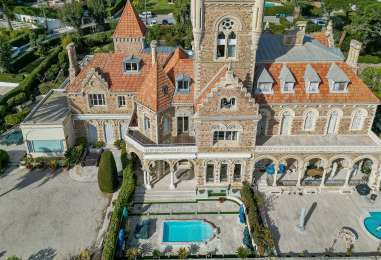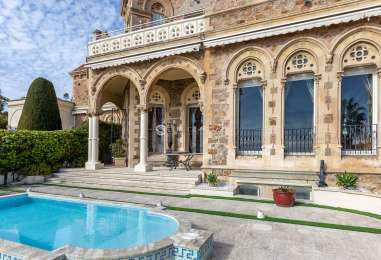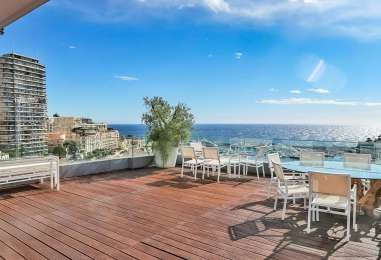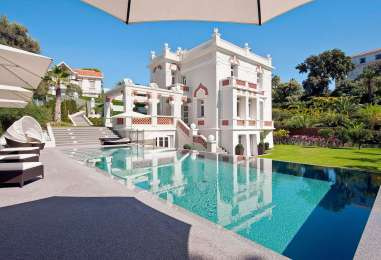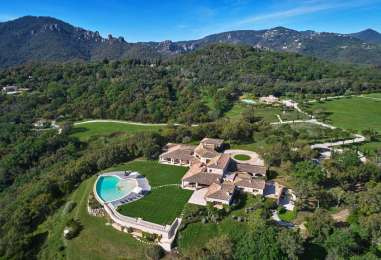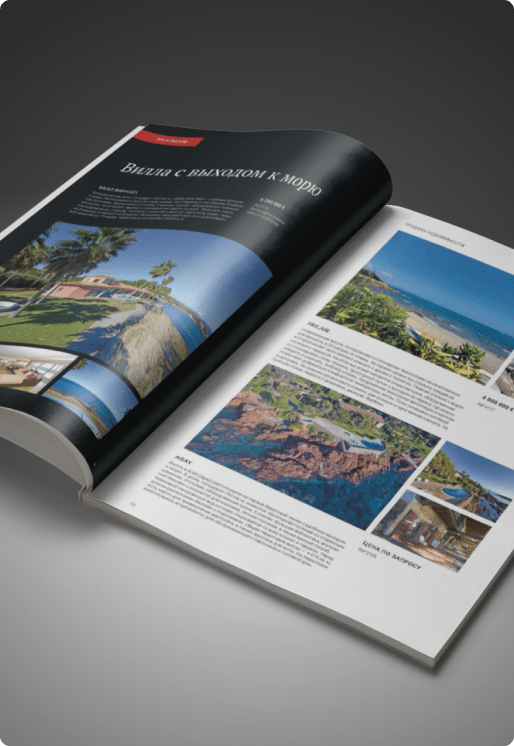Everything You Need to Know About Taxation on Capital Gains When Selling a Property
Capital gains tax is an important consideration for most property owners who decide to sell their real estate. This is due to the fact that the value of French property traditionally appreciates over the long term, especially in highly sought-after coastal regions such as the French Riviera.
Below is a clear and detailed explanation of the subject: the applicable tax rates, the exemptions you may be eligible for, how the notary calculates the tax, and the actual amount you will pay when selling your apartment or villa.
2. When Does Capital Gains Tax Apply?
3. Exemptions: Main Cases
4. Resident vs. Non-Resident: Impact on Taxation
5. How Capital Gain Is Calculated: Three Steps
6. Residents vs. Non-Residents: Rates and Social Contributions
7. Specific Rules for Non-Residents
8. Who Handles the Calculation and Declarations
9. Practical Advice for Property Owners
10. Important Notice
1. What Is Capital Gain?
Real estate capital gain refers to the tax on the profit realized when an individual sells a property.
The calculation is straightforward:
Capital Gain = (Sale Price – Purchase Price) – Deductible Expenses – Depreciation over the Ownership Period
If the calculation results in no gain or if the property qualifies for an exemption, no tax is due.
2. When Does Capital Gains Tax Apply?
Capital gains tax applies when an individual sells a property and makes a profit. The following are subject to taxation:
-
Residential properties: apartments, houses, villas,
-
Land, including building plots,
-
Other types of property: forests, agricultural land, etc.,
-
Property rights: usufruct, bare ownership (nue-propriété), easements, etc.,
-
Sales through a non-corporate SCI -Société Civile Immobilière not subject to corporate tax (IS),
-
Exchanges, capital contributions, or property partitions that generate a capital gain.
Who is concerned?
-
French tax residents: tax applies to capital gains on all their properties, wherever they are located, unless an international tax treaty provides otherwise.
-
Non-residents in France: tax applies only to gains on properties located in France.
3. Exemptions: Main Cases
French law provides several situations where real estate capital gains tax is fully exempt.
3.1. Sale of the Primary Residence
For French tax residents:
-
The sale of the primary residence and its dependencies (garage, parking, cellar, etc.) is fully exempt from capital gains tax and social contributions, regardless of the duration of ownership.
-
The property must be the primary residence at the time of sale (specific rules may apply in cases of divorce or separation, but the principle remains the same).
For non-residents who previously lived in France:
-
the sale occurs no later than December 31 of the year following departure from France,
-
the property has not been rented out or transferred to a third party between the departure and the sale.
3.2. Sale of “Low-Value” Properties
If the sale price per seller does not exceed €15,000, the capital gain is not subject to taxation.3.3. Exemption for the Purchase of a First Primary Residence
This measure is designed for individuals who have not owned a primary residence for several years. It applies when you sell a property that is not your primary residence, and both of the following conditions are met:
-
you have not owned a primary residence during the last four years (e.g., you were renting),
-
you use part or all of the sale proceeds to purchase or build your future primary residence in France within two years after the sale.
In this case, the capital gains tax is reduced proportionally to the portion of the proceeds actually reinvested in the new property. If the entire sale price is reinvested, the exemption is full.
3.4. Exemption Based on Length of Ownership
Capital gains tax in France consists of two components:
-
19 % income tax,
-
17.2 % social contributions.
The longer you hold a property, the more these taxes are reduced through a system of annual allowances:
-
After 22 years of ownership, you are fully exempt from income tax on the capital gain.
-
After 30 years, you are also exempt from social contributions, making the capital gains tax completely null.
A summary table showing the allowances by years of ownership is provided below.
What This Means in Practice
-
If you have owned a property for less than 22 years, capital gains tax applies, but the taxable base decreases each year thanks to the ownership duration allowances.
-
After 22 years of ownership, only the social contributions (17.2 %) remain due, and these continue to benefit from annual reductions.
-
After 30 years of ownership, capital gains tax is fully eliminated, including social contributions.
3.5. Specific Social and Urban Allowances
Certain exemptions or special abatements may apply:
-
For retirees and low-income individuals with disabilities.
-
When a property is sold after a stay in a retirement home or a facility for disabled persons, if it was the former primary residence.
-
For sales to social housing operators or as part of major urban development projects or high-demand market zones: additional abatements of 60–70 % on the capital gain may apply under certain conditions (demolition and reconstruction of collective housing, zones A, A bis, B1, etc.).
3.6. Specific Allowance for Non-Residents (Limit €150,000)
If you are a non-resident but:
-
are a citizen of an EU or EEA country that has signed a tax treaty with France, and
-
have been a tax resident in France for at least two consecutive years,
then, when selling one of your properties in France, you may be eligible for a capital gains exemption of up to €150,000, provided that the conditions regarding ownership duration and actual use of the property are met.
4. Resident vs. Non-Resident: Impact on Taxation
4.1. French Tax Resident
You are considered a tax resident in France if, in simplified terms:
-
your primary home or the center of your economic or family interests is located in France, or
-
you spend more than 183 days per year in France (or more than in any other country).
A French tax resident declares all worldwide income, including certain capital gains realized on foreign properties, unless a tax treaty allocates taxation exclusively to the country where the property is located.
4.2. Non-Resident
A non-resident is taxable in France only on income and capital gains sourced in France, meaning that the real estate is located in France.
5. How Capital Gain Is Calculated: Three Steps
Step 1 : Determine the Gross Capital Gain
This is the basic difference between the sale price of the property and its actual acquisition cost.
The formula is straightforward:
Gross Capital Gain = Adjusted Sale Price – Adjusted Purchase Price
1) Adjusted Sale Price
The calculation starts with the price stated in the notarial deed, but this amount can be slightly reduced if certain sale-related expenses are justified, such as:
-
mandatory property inspections,
-
agency commission (if paid by the seller),
-
various indemnities or compensations.
2) Adjusted Purchase Price
The calculation includes:
-
the actual purchase price stated in the deed, or
-
the declared value in the case of inheritance or a gift.
To this base, certain expenses are added:
Acquisition Costs
-
either the actual expenses supported by receipts,
-
or a flat-rate allowance of 7.5 %, which is the most common method.
Renovation Costs
Only works that alter the property (rehabilitation, improvement, or extension) are taken into account:
-
either based on actual invoices from certified companies,
-
or a flat-rate 15 % allowance if the property has been owned for more than 5 years, even without invoices.
Additional costs that may also be included: connection to utilities, land development, and similar expenses.
Example
-
Purchase of an apartment: €300 000
-
Acquisition costs (flat 7.5 %): +€22 500
-
Renovation costs (property held for more than 5 years, flat 15 %): +€45 000
Final acquisition price:
300 000 + 22 500 + 45 000 = €367 500
If the apartment is sold for €450 000, then:
Gross Capital Gain = 450 000 – 367 500 = €82 500
To make the calculation easier, you can use a capital gains tax calculator.
Step 2 : Ownership Duration Allowances
French law encourages long-term property ownership: the longer you hold a property, the smaller the taxable base becomes.
It is important to note that allowances differ for income tax and social contributions.
Allowances by Ownership Duration
|
Ownership Duration
|
Allowance for Income Tax (19 %) | Allowance for Social Contributions (17.2 %) |
|---|---|---|
| Less than 6 years | 0 % | 0 % |
| 6th to 21st year (inclusive) | 6 % per full year | 1.65 % per full year |
| 22nd year | 4 % | 1.6 % |
| 23rd to 30th year (inclusive) | Income tax already zero | 9 % per full year |
| More than 30 years | Full exemption | Full exemption |
Summary:
-
For income tax (19 %), the property is exempt after 22 years of ownership.
-
For social contributions (17.2 %), exemption applies after 30 years of ownership.
Step 3 : Applying Rates — Tax, Social Contributions, and Additional Tax
After applying all possible allowances and exemptions, you obtain the taxable capital gain, which is subject to the following taxation:
-
Income Tax: 19 %,
-
Social Contributions: 17.2 % for residents and most non-residents (details below),
-
Additional Tax on High Capital Gains if the net gain exceeds €50 000.
Additional Tax on High Capital Gains
If the taxable capital gain after allowances exceeds €50 000 per seller, a progressive additional tax from 2 % to 6 % applies. The formula includes a slight reduction in transitional brackets, but simplified:
-
€50 001 – €60 000: approximately 2 %
-
€60 001 – €100 000: 2 %
-
€100 001 – €150 000: approximately 3 %
-
€150 001 – €200 000: approximately 4 %
-
€210 001 – €250 000: approximately 5 %
-
Over €260 000: 6 %
The notary performs the exact calculation using the official form n°2048-IMM-SD.
6. Residents vs. Non-Residents: Rates and Social Contributions
For foreign clients, the key question is: how much will they pay as a non-resident, and how does it differ from a French resident?
6.1. General Rule
For income tax (19 %), residents and non-residents are taxed in the same way. Differences mainly appear regarding social contributions.
6.2. Social Contributions for Non-Residents from the EU/EEA/Switzerland
For individuals who:
-
reside in an EU/EEA country or Switzerland, and
-
are subject to the mandatory social security system of that country,
the following applies:
-
Exemption from CSG and CRDS on French capital gains,
-
Payment of a solidarity contribution of 7.5 % instead.
Total burden: 19 % (income tax) + 7.5 % (solidarity contribution) = 26.5 %
6.3. Social Contributions for Other Non-Residents and French Residents
-
French residents, as well as non-residents not eligible for the preferential regime, pay the full social contributions rate: 17.2 %.
Total burden: 19 % + 17.2 % = 36.2 % (before applying ownership duration allowances).
7. Specific Rules for Non-Residents
7.1. General Principle
Non-residents selling property in France are subject to Article 244 bis A of the French General Tax Code (CGI). The tax is calculated by the notary and automatically withheld at the time of signing the deed, so the seller receives the sale proceeds net of tax.
7.2. Tax Representative
In certain cases, a non-resident must appoint a tax representative, responsible for verifying the accuracy of the calculation with the French tax authorities.
Summary:
-
EU/EEA citizens are almost always exempt from this requirement.
-
Non-residents from other countries may be required to appoint a tax representative depending on the transaction amount or the size of the capital gain.
-
The notary automatically assesses whether a representative is needed and arranges the appointment if required.
8. Who Handles the Calculation and Declarations
8.1. Role of the Notary
During the transaction, the French notary:
-
verifies the applicability of exemptions (primary residence, ownership duration, benefits for non-residents, etc.);
-
calculates the taxable capital gain as well as the amount of tax and social contributions;
-
completes form n°2048-IMM-SD (or the specific form for building plots);
-
withholds the tax and social contributions directly from the sale price and remits them to the tax authorities upon registration of the transaction.
8.2. Reporting in the Annual Tax Return
Even if the tax has already been paid through the notary, the seller must:
-
report in their annual income tax return the capital gain amount declared by the notary;
-
if applicable, also indicate any exempt capital gain, for example, in the case of an exemption for the purchase of a first primary residence that is not the current primary residence.
A capital gains tax calculator can be used to estimate the amount payable.
9. Practical Advice for Property Owners
1. Keep records of all renovation work — it’s your money
If you have carried out renovations, reconstructions, or extensions through contractors, make sure to keep all invoices. Actual expenses are often more advantageous than the standard 15 % flat-rate allowance.
2. Plan ahead for the property’s status
If you truly occupy the property, it is advisable to officially declare it as your primary residence. This allows you to benefit from full capital gains tax exemption upon sale.
3. Ownership duration matters
The 22-year threshold grants exemption from income tax (19 %), and 30 years for all social contributions. Sometimes it may be beneficial to slightly delay the sale to take advantage of full exemption.
4. Non-residents must confirm their social security status
EU/EEA and Swiss citizens, covered by their mandatory social system, can benefit from reduced social contributions of 7.5 % instead of 17.2 %. Supporting documents are required to apply this regime.
5. Consider international tax treaties
France has signed treaties with several countries to avoid double taxation. In some cases, tax paid in France can be credited in the country of residence.
6. Consult a professional before listing the property
If you are a non-resident or the ownership structure is complex (inheritance, SCI, usufruct, etc.), it is recommended to discuss your situation with a notary and, if necessary, with a tax advisor, especially for international transactions.
7. Perform a preliminary tax calculation before listing
Before setting the price and putting the property on the market, it is useful to know the expected capital gains tax. This allows you to estimate the net proceeds from the sale and avoid unpleasant surprises. A notary or tax advisor can provide a realistic estimate of the net amount you will receive.
10. Important Notice
-
The rules presented in this article are based on official sources: Service-Public (information on capital gains tax, updated 2025), documents from impots.gouv.fr, as well as the applicable articles of the French General Tax Code (CGI, notably art. 244 bis A).
-
Tax legislation may change and can vary significantly depending on the seller’s specific situation (family status, country of residence, ownership of other properties, income level, etc.).
This article is for informational purposes only and does not replace personalized advice from a notary or tax advisor.
The experts at Property Service Azur assist you not only with the purchase of real estate but also with tax optimization, income declaration, and management of your property portfolio.

